Welcome to the world of raised bed gardening, where the joy of cultivating your own vegetables is not only within reach but also incredibly rewarding. Whether you’re a beginner just dipping your toes into the soil or an experienced gardener with a green thumb, this guide will unveil the best vegetables to thrive in these elevated plots, turning your gardening efforts into a bountiful harvest.
Incorporating raised beds into your gardening routine offers a multitude of benefits, from improved soil drainage to reduced back strain, making it accessible and enjoyable for everyone. This curated list of vegetables is designed to ensure success, providing you with the tools to grow vibrant, healthy produce that will make every meal a celebration of freshness.
Imagine the satisfaction of harvesting your own crisp lettuce, juicy tomatoes, or crunchy carrots, knowing you nurtured them from seed to plate. With this guide in hand, you’ll gain practical insights and confidence, transforming your raised beds into a flourishing oasis of flavor and color that you’ll relish season after season.
Carrots (Nantes)
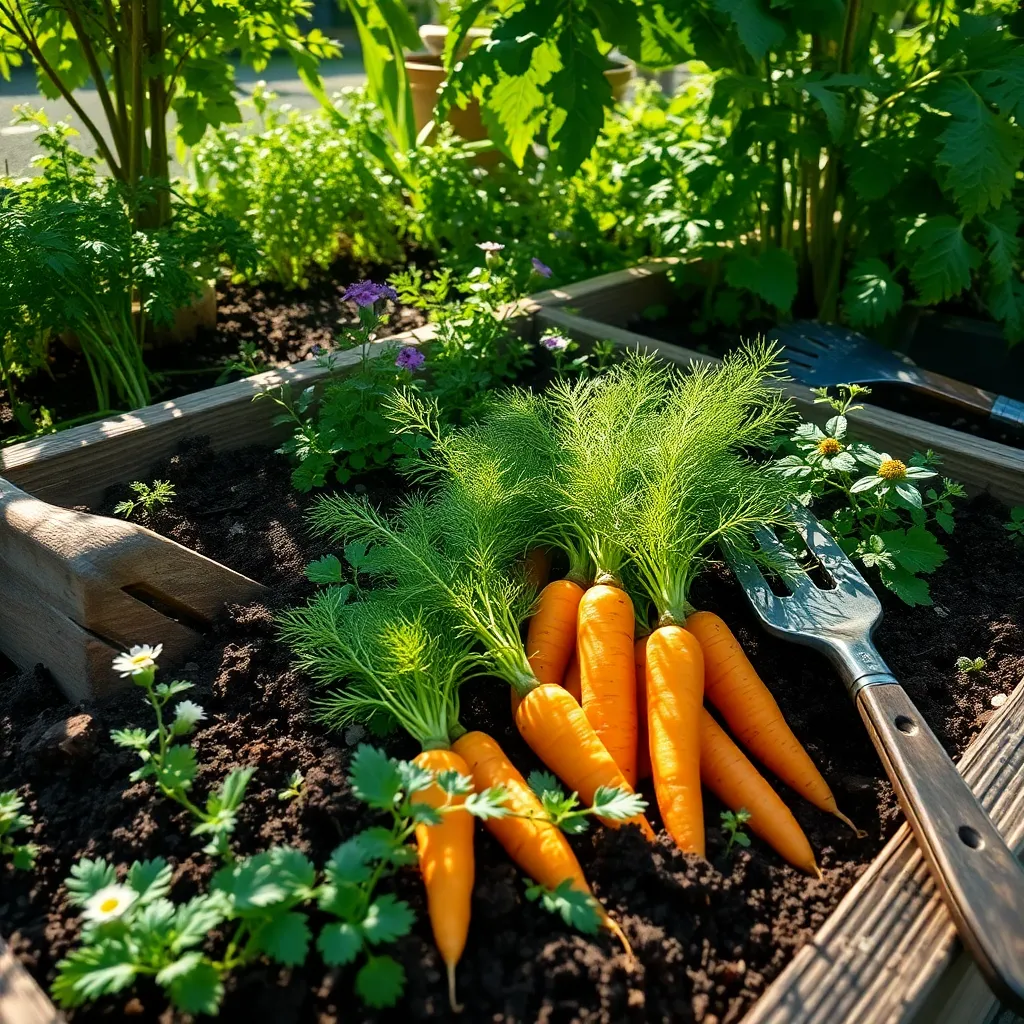
Nantes carrots are an excellent choice for raised bed gardening due to their uniform size and sweet flavor. These carrots thrive in loose, well-draining soil that is rich in organic matter, making raised beds ideal as they can be filled with a customized soil mix.
To ensure optimal growth, prepare the soil by mixing in aged compost or well-rotted manure before planting. Consistent moisture is crucial, so water your carrots regularly, aiming for about 1 inch of water per week, and mulch to retain soil moisture and keep weeds at bay.
When sowing Nantes carrot seeds, plant them about 1/4 inch deep and 1 inch apart in rows. Thin seedlings to about 2 to 3 inches apart once they reach 2 inches in height to allow ample room for root development.
For advanced gardeners looking to maximize yield, consider succession planting every 2-3 weeks through midsummer. This technique ensures a continuous harvest, allowing you to enjoy fresh carrots over an extended period.
Radishes (French Breakfast)
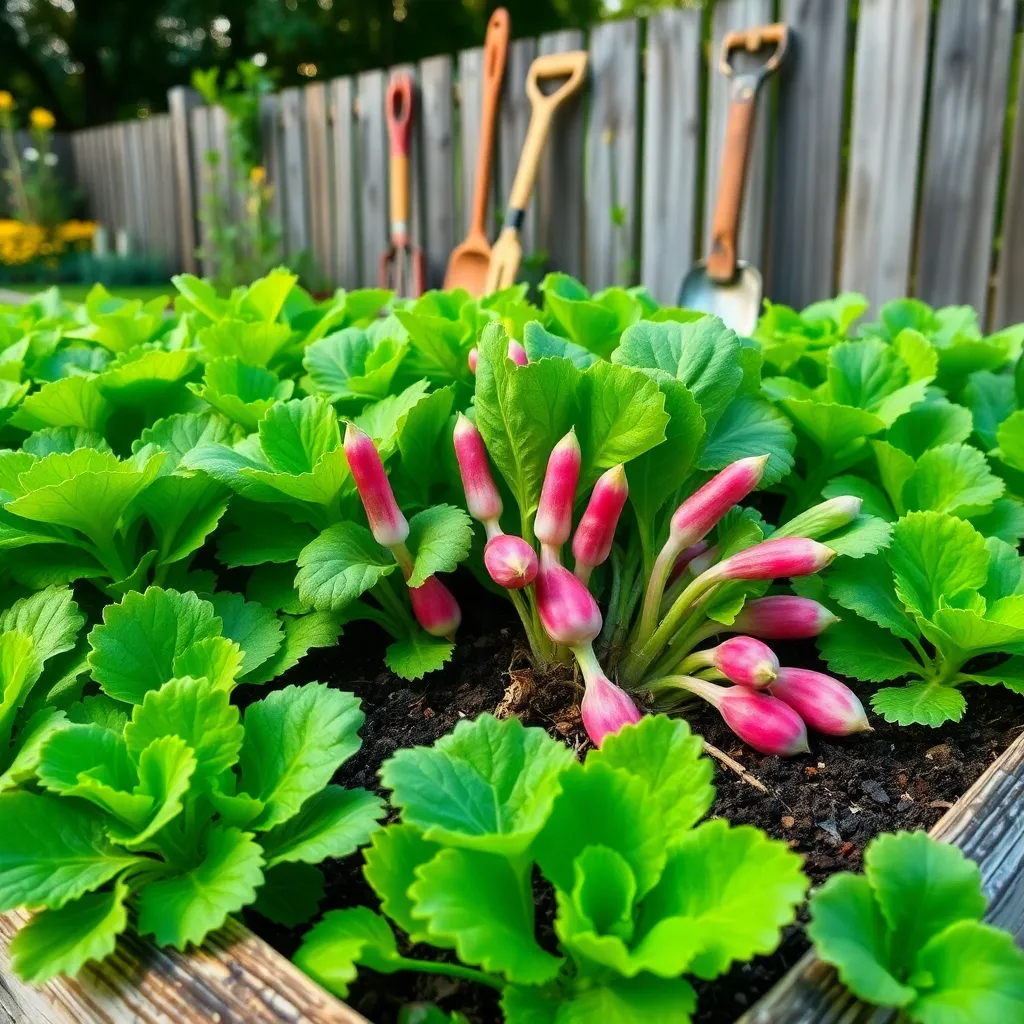
Radishes, especially the French Breakfast variety, are an excellent choice for raised beds due to their quick growth and compact size. These radishes thrive in well-drained, loose soil, making raised beds ideal for avoiding the compaction issues often found in traditional garden plots.
Plant French Breakfast radishes in early spring or fall when temperatures are cooler, as they prefer temperatures between 50°F and 70°F. Space seeds about one inch apart and cover them lightly with soil, ensuring they have plenty of room to grow without overcrowding.
Regular watering is crucial for radishes, especially in raised beds where soil can dry out more quickly. Aim to keep the soil consistently moist but not waterlogged, watering every few days or as needed based on weather conditions.
For gardeners looking to maximize yield, consider practicing successive sowing by planting small batches of seeds every two weeks. This staggered approach ensures a continuous harvest, allowing you to enjoy fresh radishes throughout the growing season.
Lettuce (Buttercrunch)
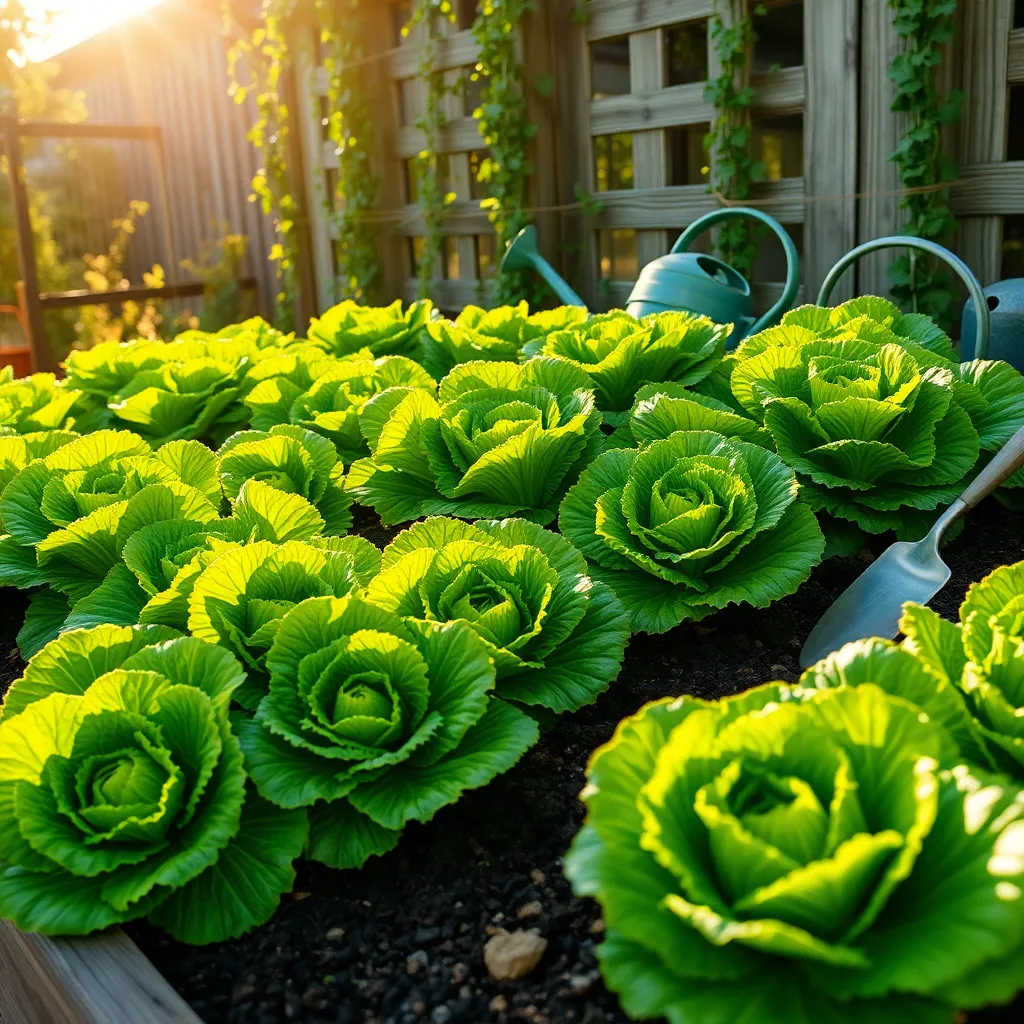
Buttercrunch lettuce is a fantastic choice for raised beds, offering both flavor and ease of growth. This variety thrives in well-draining soil rich in organic matter, making it ideal for the controlled environment of a raised bed.
Begin by sowing seeds directly into the soil, spacing them about 6 inches apart to allow for proper growth. As the plants develop, ensure they receive about 1 inch of water per week, adjusting for rainfall to keep the soil consistently moist but not waterlogged.
For the best results, position your raised bed where it will receive full sun to partial shade, as Buttercrunch lettuce prefers cooler temperatures. During warmer months, consider using a shade cloth to protect the plants from excessive heat, which can cause bolting.
Regularly harvest the outer leaves of the lettuce to encourage continuous growth and a bountiful supply. Advanced gardeners might also experiment with succession planting, sowing seeds every couple of weeks to enjoy fresh lettuce throughout the growing season.
Zucchini (Black Beauty)
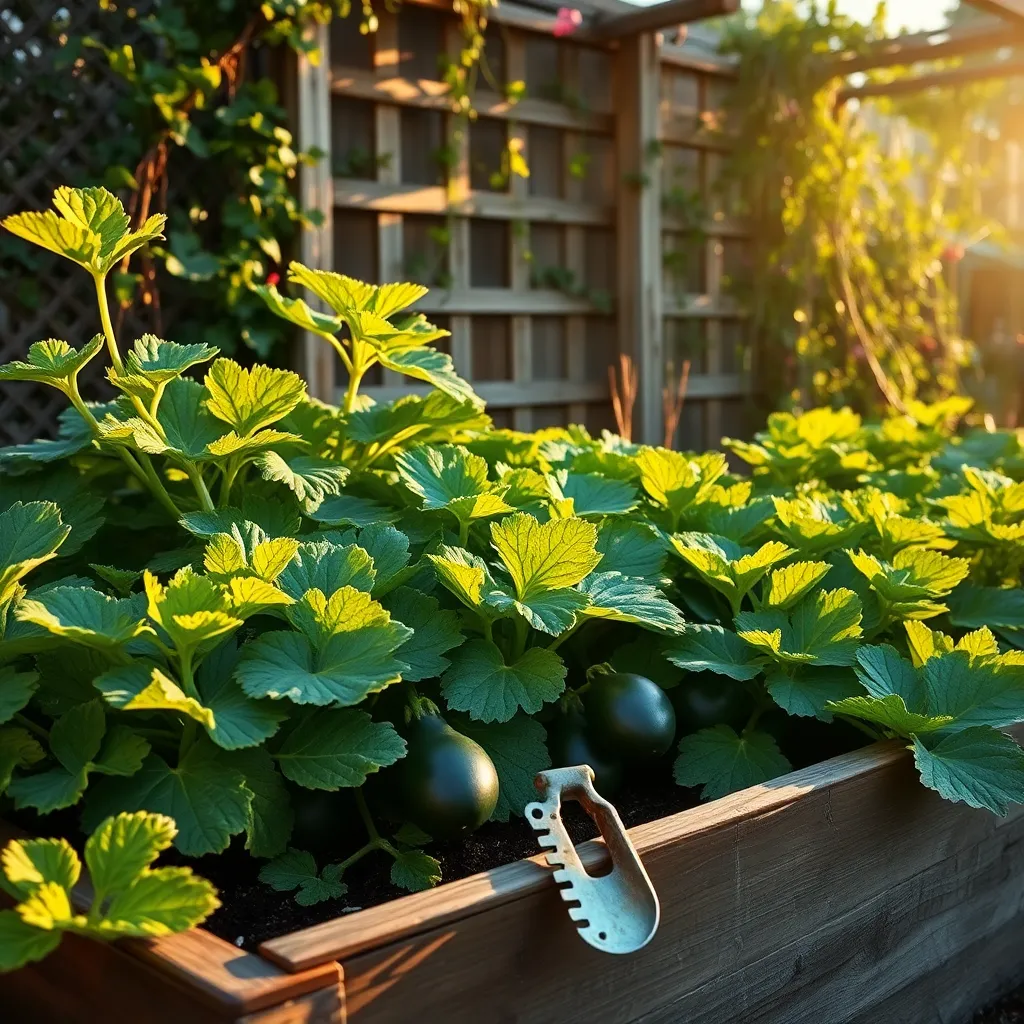
Zucchini, particularly the ‘Black Beauty’ variety, thrives exceptionally well in raised beds due to its space and nutrient requirements. Raised beds provide excellent drainage, which is crucial for zucchini to avoid root rot and other moisture-related issues.
For optimal growth, plant zucchini seeds or seedlings after the last frost date when the soil temperature is at least 60°F (15°C). Use rich, well-drained soil with plenty of organic matter like compost or aged manure to support the plant’s rapid growth.
Water your zucchini consistently, aiming to keep the soil evenly moist but not waterlogged. Incorporate a thick layer of mulch around the plants to retain moisture and suppress weeds, which can compete for nutrients.
Encourage a bountiful harvest by providing each plant with ample space, ideally about 3 feet apart, to allow for proper air circulation and sunlight exposure. Regularly check for pests such as squash bugs and use organic controls like neem oil if necessary to protect your plants.
Parsley (Italian Flat Leaf)
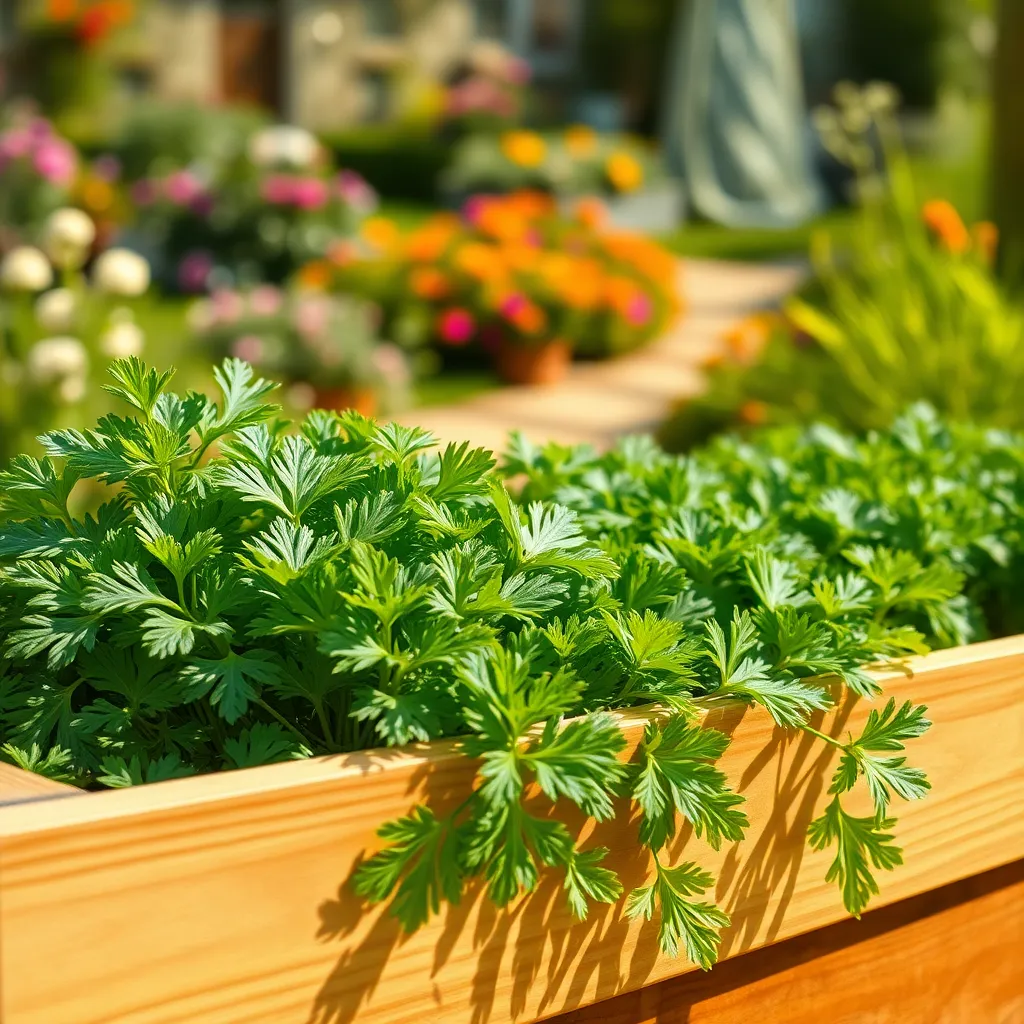
Italian Flat Leaf Parsley is a versatile herb that thrives in raised beds, offering both culinary and aesthetic benefits. This herb prefers well-drained soil with a rich organic matter content, making raised beds ideal for its growth.
To ensure robust growth, plant parsley in a spot that receives full sun to partial shade, which helps the leaves develop their full flavor. Keep the soil consistently moist, but avoid overwatering as parsley does not like to sit in waterlogged conditions.
Begin with quality seeds or seedlings, spacing them about 6 to 8 inches apart to allow enough room for the plants to mature. Regular harvesting encourages bushier growth; simply snip the outer leaves as needed, leaving the inner stems to continue growing.
For more advanced gardeners, consider succession planting every few weeks to maintain a continuous supply of fresh leaves throughout the season. Additionally, enriching the soil with a balanced organic fertilizer every 4 to 6 weeks can significantly enhance plant vigor and yield.
Conclusion: Growing Success with These Plants
In exploring the best vegetables for raised beds, we delved into five essential relationship concepts crucial for a flourishing garden and partnerships alike: planning for compatibility, nurturing through consistent effort, adapting to changing conditions, cultivating patience, and celebrating shared growth. Just as a thriving garden requires thoughtful selection and care, our relationships bloom when we recognize and tend to their unique needs.
As an immediate next step, take a moment to discuss with your partner or loved one how these principles can be applied to your relationship. Whether it’s planning a shared activity or setting aside time for meaningful conversations, small actions can yield significant growth.
Don’t let this valuable information slip away—bookmark this article as a handy guide for nurturing both your garden and your relationships. Having it at your fingertips ensures you’re equipped with the knowledge to cultivate a thriving environment at any time.
Remember, the seeds you plant today, both in your garden and in your relationships, can lead to a harvest of joy and connection tomorrow. With consistent effort and attention, success in your relationships is not only possible but is just around the corner.

